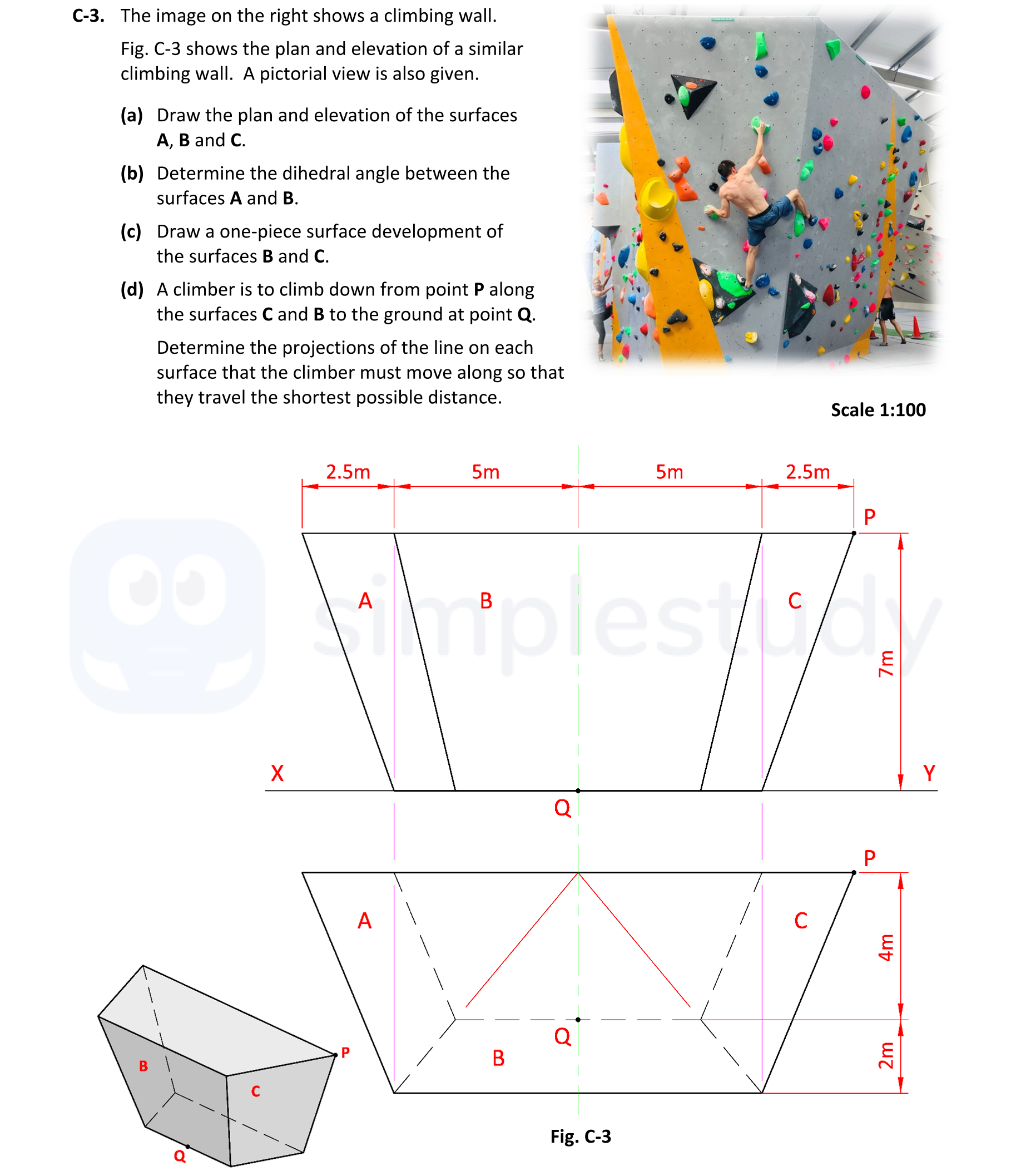Photo AI
The image on the right shows a climbing wall - Leaving Cert DCG - Question C.3 - 2022
Question C.3

The image on the right shows a climbing wall. Fig. C-3 shows the plan and elevation of a similar climbing wall. A pictorial view is also given. (a) Draw the plan an... show full transcript
Worked Solution & Example Answer:The image on the right shows a climbing wall - Leaving Cert DCG - Question C.3 - 2022
Step 1
Draw the plan and elevation of the surfaces A, B and C.
Answer
To draw the plan and elevation of the surfaces A, B, and C:
-
Plan:
- Draw a horizontal line to represent the ground level.
- Mark the key points P, Q, X, and Y according to the scale (1:100).
- Represent surfaces A, B, and C in the plan view by outlining the correct shapes based on the specified heights (2.5m, 5m, etc.) and distances.
- Ensure all points correspond correctly with their elevation counterparts.
-
Elevation:
- Use the previously marked points to draw the vertical representation of surfaces A, B, and C.
- Ensure heights are accurate (as given in distances from plan view) and that the orientation matches the climbing wall design shown in the image.
Step 2
Determine the dihedral angle between the surfaces A and B.
Answer
To find the dihedral angle between surfaces A and B:
-
Identify Line of Intersection:
- Determine the line of intersection between surfaces A and B. This is found along the edges of contact between both surfaces.
-
Construct Plan View:
- Draw the projection line in the horizontal plane on line X.Y.
- Create perpendicular projections from points of intersection to determine the angle of inclination.
-
Calculate Dihedral Angle:
- Use trigonometric relations to find the dihedral angle at the point of intersection, noting angles from the elevation view. Consider that the dihedral angle (θ) is calculated from the angle formed by projecting the lines onto the reference plane as: heta = an^{-1} rac{h}{d} where h is height difference and d is distance along the horizontal.
Step 3
Draw a one-piece surface development of the surfaces B and C.
Answer
For this task:
-
Determine True Shape of Surfaces:
- First, create accurate representations of surfaces B and C based on the revolute observations from previous drawings.
- Use construction lines to unfold surfaces without distortion.
-
Correct Construction:
- Establish the visible edges of surface B first and unfold it towards surface C, maintaining proportional distances.
- Outline edges carefully and ensure to keep all measurements consistent with previous points.
-
Final Drawing:
- Create a clear, one-piece layout showing the combined development of surfaces B and C connected appropriately.
Step 4
Determine the projections of the line on each surface that the climber must move along.
Answer
To compute the projections:
-
Locate Required Line in Surface Development View:
- Mark point P at the top from where the climb starts and point Q at ground level. The projection must follow surfaces A and B from P down to Q.
-
Location of Line in Plan:
- In the plan view, project the line using straight lines, considering the intersection points between surfaces A and B. This aids in determining the shortest path to point Q.
-
Location of Line in Elevation:
- For the elevation view, similarly project the movements from P to point Q, focusing on the drop and the inclination of the surfaces involved. This involves accurately representing the vertical climb path downwards.
